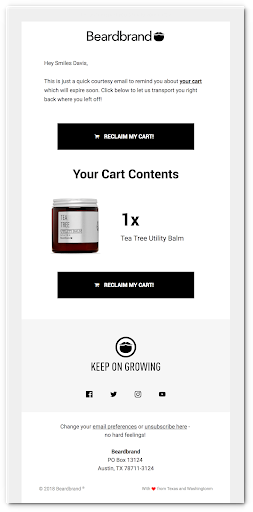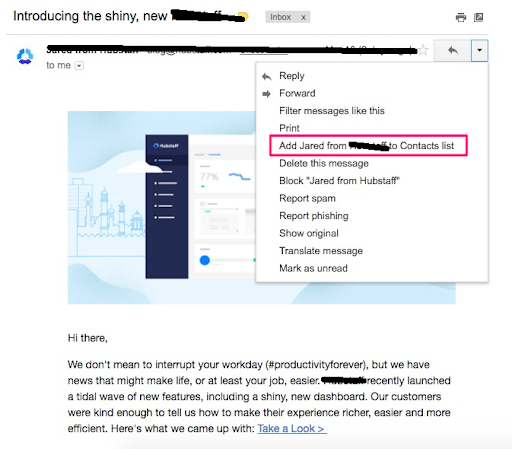30-second summary:
- A lot of debate has been going on as regards whether businesses should reduce or increase their marketing efforts. The conclusion is that reducing marketing will lead to a decline in sales.
- Out of all the many digital marketing channels available today, email marketing still proves to be the most effective as it gives the easiest and most direct access to the customer you want to reach.
- Is there anything about it that has remained effective in today’s business world?
- In this article, Toby Nwazor takes a critical look at four major things that made a difference in email marketing in 2020 like the use of predictive email marketing and what email marketers do to make sure their emails don’t land in the spam folder of their subscribers.
Since the outset of the pandemic, most businesses have constantly asked themselves whether to continue marketing the way they used to, reduce their efforts, scale-up, or stop. Stopping outrightly, however, is out of the question if you want to keep making sales and remain business. The best option is to re-strategize and discover how best to carry out your campaigns to suit the times.
So far, email marketing has remained one of the recession marketing channels that has proven to be reliable in spite of the uncertainty around us. Out of all the marketing channels, emails give you the easiest and most direct access to the customer you want to reach.
In this article, you’ll learn the best tactics that have been proven to work in 2020 which you can use to increase your reach and boost your sales using email marketing.
But first, a quick look at how email marketing was before now
Email marketers spent time creating emails that were relevant. To make this happen, they focused on sending personalized emails. In fact, Instapage reported that personalized email marketing generates a median ROI of 122 percent.
The use of personalized tags and list segmentation were some of the tools used to personalize emails while personalized email tactics like personalized messages tailored in accordance to customer data like their name, age, and location were used to give emails that personal touch.
Artificial intelligence (AI) made quite a notable appearance in 2019 and it was predicted to be used more in the years to come. Marketers have seen the wonders of AI when it comes to understanding email users, so it was only a matter of time before it became a household tool in email marketing.
The state of email marketing in 2020 so far
The good news is that the relevance of email marketing has shot through and remained at the roof with more people staying home since the outset of the pandemic. The 2020 predictions for email marketing have become more relevant than imagined.
Despite everything that was predicted, here are four things that really played a key role in 2020:
1. High-quality emails versus high volume of emails
This may seem counterintuitive especially at a time like this but the truth is that nothing beats high-quality emails. High-quality emails get read and are hardly ignored even if they are cold emails. Reducing the frequency of emails while increasing quality gives people something to look forward to. It feels like expecting a check in the mail.
Many companies focus on sending a high volume of emails every month. Some marketers believe you have to send an email every day. But according to research done by Hubspot, email open rates start to decline when the number of emails sent in a month gets beyond 16.

Source: Hubspot
So instead of sending emails every day, you could choose to send a high-quality email every two to three days, and make sure that they are valuable to your subscribers. For instance, you could create a customer service email sequence for those who have made a purchase, or create a sales offer email that gives special discounts and coupons. And these will be different from the regular newsletter email sequence that your subscribers join when they land on your home page.
This has proven to in turn lead to higher opening rates as subscribers will be confident that they will get value out of every email, and the emails are specifically sent to meet their needs.
2. More personalized and optimized emails
Email marketers are becoming more conscious of the effectiveness of their emails. It’s no longer just about making sure that emails hit subscribers’ inboxes as when due. One strategy you must apply is personalization, as personalized emails have been reported to deliver six times higher transaction rates. So far, we have seen a heavier application of personalized emails, but this time with a higher reliance on automation to make this happen.
Automation allows marketers to leverage personalized touchpoints like the time when their subscribers are more likely to check their emails. Plus, automation makes the whole process of sending emails on those touchpoints more scalable. Retailers can now deliver more valuable and timely messages.
For instance, consider the issue of abandoned shopping carts, Fresh Relevance reported a 56.82% shopping cart abandonment rate in 2018. Email marketers tackled this problem in 2020 by sending automated emails to help trigger the fear of missing out (FOMO) in customers. A good example is the automated and personalized abandonment messages that BreadBrand sends to customers that abandoned their carts. See a screenshot below.

3. Whitelisting your emails out of the spam box
Email filters have never been as sophisticated as they are today, and if your emails end up in the spam box, it defeats your reason for sending the email in the first place. Many email providers, including Google, have heightened their spam protections by using AI to keep spam at bay.
In fact, Google incorporated Tensorflow in their spam filter in 2019 to enable Google to personalize spam protection for each Gmail user. Email marketers had to become more conscious of best email practices this year in order to avoid emails landing in spam.
One of the ways this is done is by whitelisting your emails. This is done by asking your customers to open the automated email they get immediately after subscription in order to get the lead magnet you sent and add you up. Or while sending them a “welcome email”, ask them to add your email address to their address books. When they do so, it ensures that subsequent emails from that address will get to their inbox and never the spam folder.
Ironically, from the screenshot below, this is very simple. Unfortunately, most marketers don’t do it.

Another way you can do this is to avoid the use of words that make emails look like spam. If your emails contain words like “rich”, “deal”, “prize”, “purchase”, “order”, and more. Many inboxes have been programmed to detect such words and automatically profile the emails as spam.
4. Use of predictive email marketing
Since email marketers have been using more AI-based applications this year, they have been able to write higher converting emails and subject lines. This was made possible this year through the use of predictive marketing.
Emails and subject line copy can now be guided by AI and machine learning so that better emails will be created with greater accuracy and in half the time. This means that email marketers will be able to work a lot smarter in their efforts to increase conversions and reduce the number of people who unsubscribe.
Although 2020 hasn’t looked as rosy as you thought it would, especially with the pandemic that hit us, a lot of progress has been made with email marketing. So many businesses have already bounced back, and the market is booming.
Adopting the already existing pointers above could result in a major change when it comes to increasing your reach, creating high-quality emails that are guaranteed to convert, and drastically reducing the number of people who unsubscribe.
Now that we have more people’s eyes checking their email, this is the best time to start investing more time and energy into email marketing.
Have any observations you would like to share with us? Feel free to drop a comment.
The post Email marketing in 2020: Four key things that made the difference appeared first on Search Engine Watch.
No comments:
Post a Comment